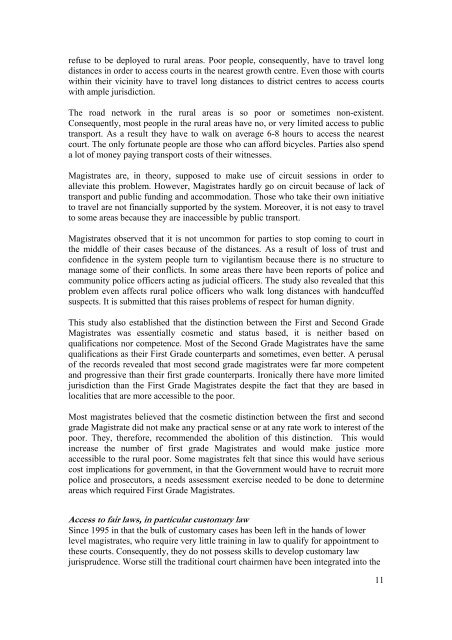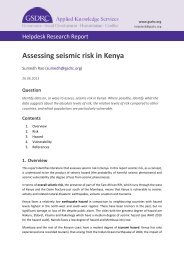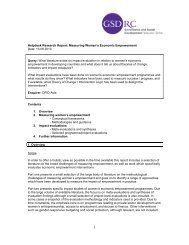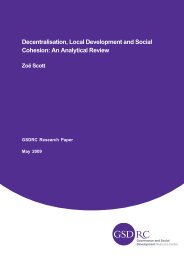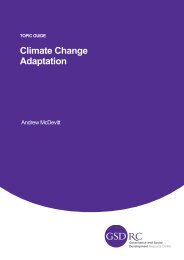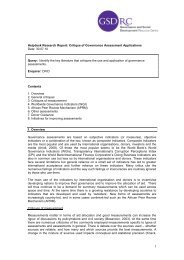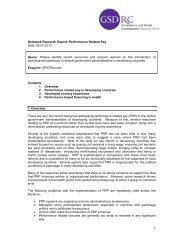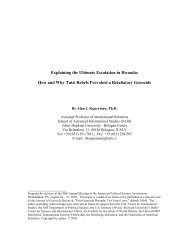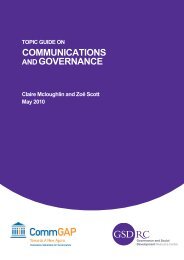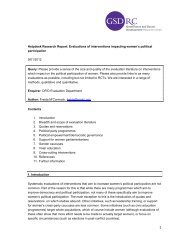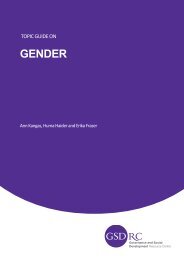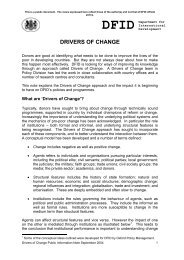ACCESS TO JUSTICE FOR THE POOR OF MALAWI? AN ... - GSDRC
ACCESS TO JUSTICE FOR THE POOR OF MALAWI? AN ... - GSDRC
ACCESS TO JUSTICE FOR THE POOR OF MALAWI? AN ... - GSDRC
- No tags were found...
Create successful ePaper yourself
Turn your PDF publications into a flip-book with our unique Google optimized e-Paper software.
efuse to be deployed to rural areas. Poor people, consequently, have to travel longdistances in order to access courts in the nearest growth centre. Even those with courtswithin their vicinity have to travel long distances to district centres to access courtswith ample jurisdiction.The road network in the rural areas is so poor or sometimes non-existent.Consequently, most people in the rural areas have no, or very limited access to publictransport. As a result they have to walk on average 6-8 hours to access the nearestcourt. The only fortunate people are those who can afford bicycles. Parties also spenda lot of money paying transport costs of their witnesses.Magistrates are, in theory, supposed to make use of circuit sessions in order toalleviate this problem. However, Magistrates hardly go on circuit because of lack oftransport and public funding and accommodation. Those who take their own initiativeto travel are not financially supported by the system. Moreover, it is not easy to travelto some areas because they are inaccessible by public transport.Magistrates observed that it is not uncommon for parties to stop coming to court inthe middle of their cases because of the distances. As a result of loss of trust andconfidence in the system people turn to vigilantism because there is no structure tomanage some of their conflicts. In some areas there have been reports of police andcommunity police officers acting as judicial officers. The study also revealed that thisproblem even affects rural police officers who walk long distances with handcuffedsuspects. It is submitted that this raises problems of respect for human dignity.This study also established that the distinction between the First and Second GradeMagistrates was essentially cosmetic and status based, it is neither based onqualifications nor competence. Most of the Second Grade Magistrates have the samequalifications as their First Grade counterparts and sometimes, even better. A perusalof the records revealed that most second grade magistrates were far more competentand progressive than their first grade counterparts. Ironically there have more limitedjurisdiction than the First Grade Magistrates despite the fact that they are based inlocalities that are more accessible to the poor.Most magistrates believed that the cosmetic distinction between the first and secondgrade Magistrate did not make any practical sense or at any rate work to interest of thepoor. They, therefore, recommended the abolition of this distinction. This wouldincrease the number of first grade Magistrates and would make justice moreaccessible to the rural poor. Some magistrates felt that since this would have seriouscost implications for government, in that the Government would have to recruit morepolice and prosecutors, a needs assessment exercise needed to be done to determineareas which required First Grade Magistrates.Access to fair laws, in particular customary lawSince 1995 in that the bulk of customary cases has been left in the hands of lowerlevel magistrates, who require very little training in law to qualify for appointment tothese courts. Consequently, they do not possess skills to develop customary lawjurisprudence. Worse still the traditional court chairmen have been integrated into the11


